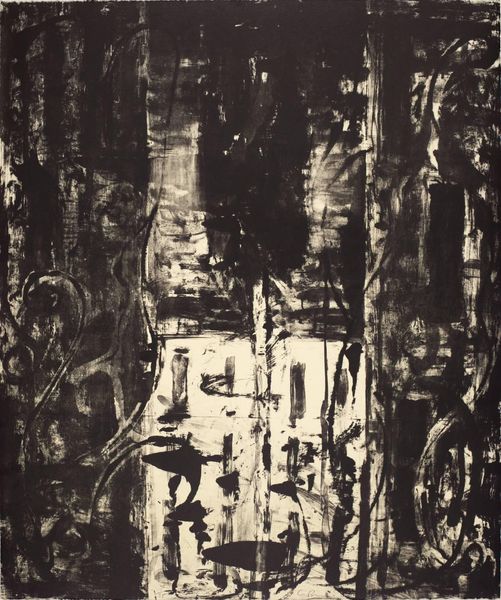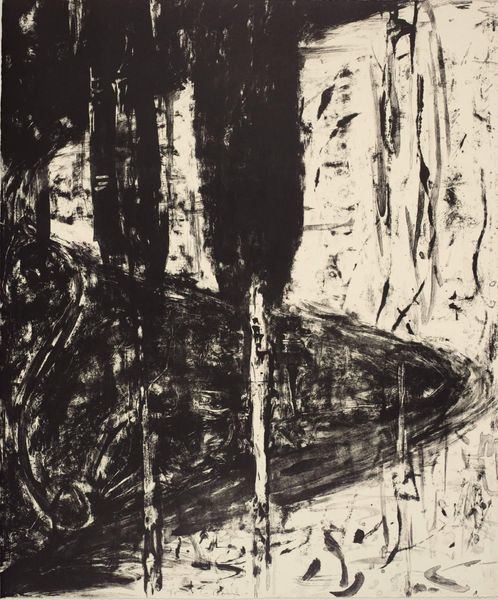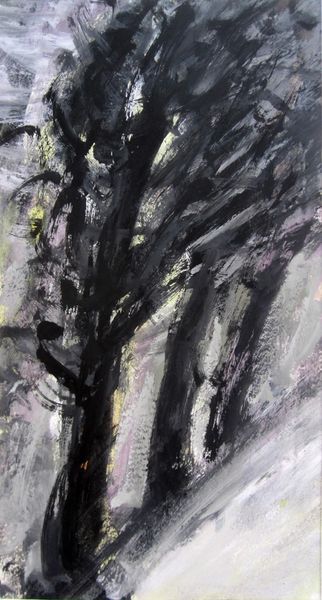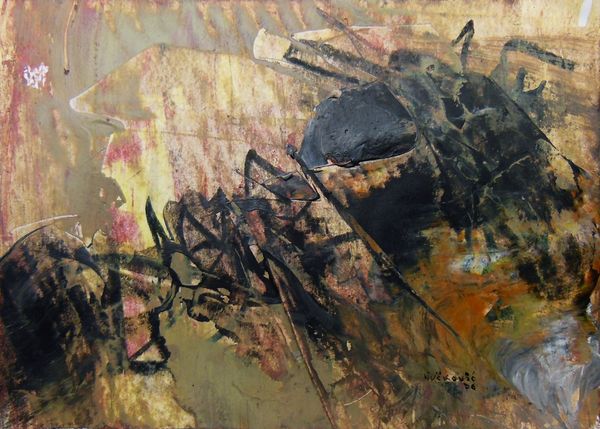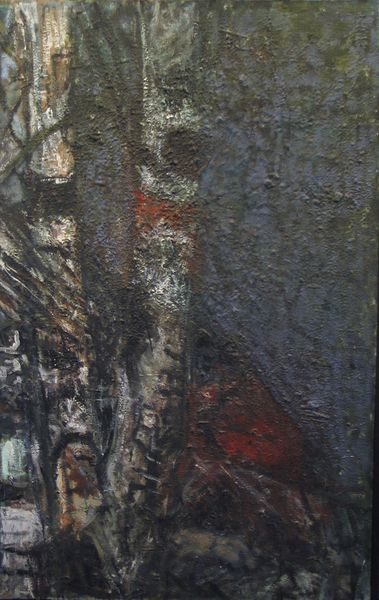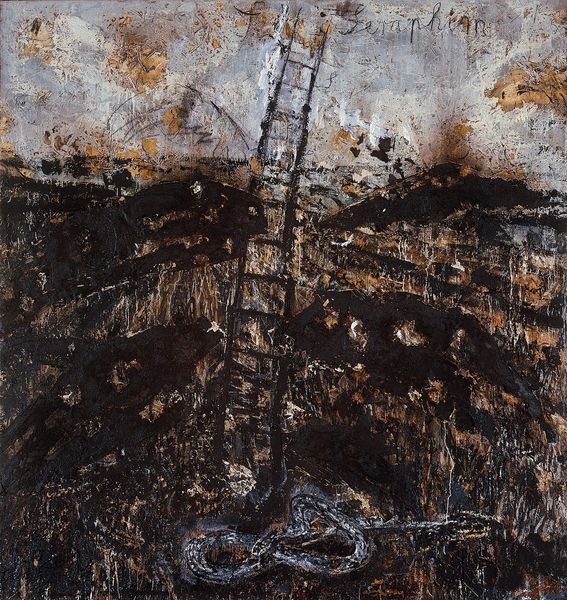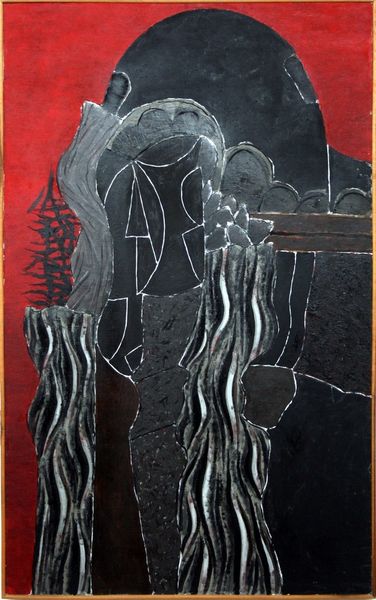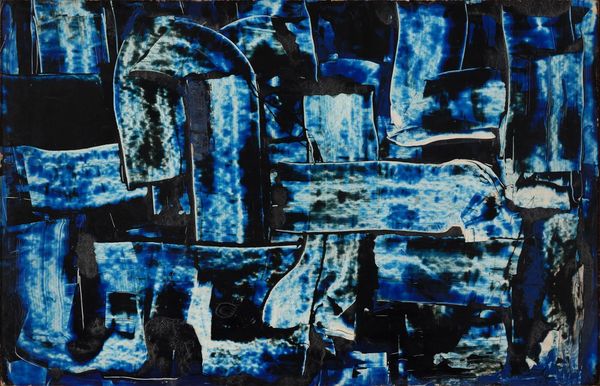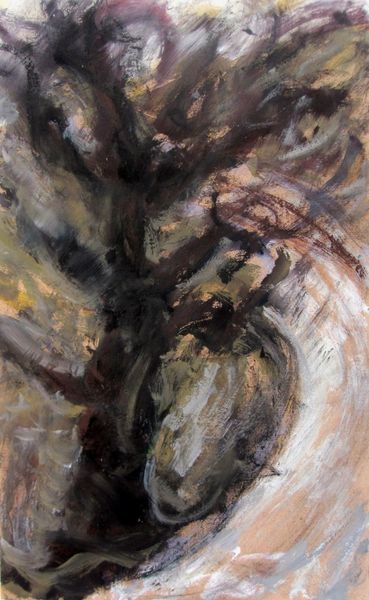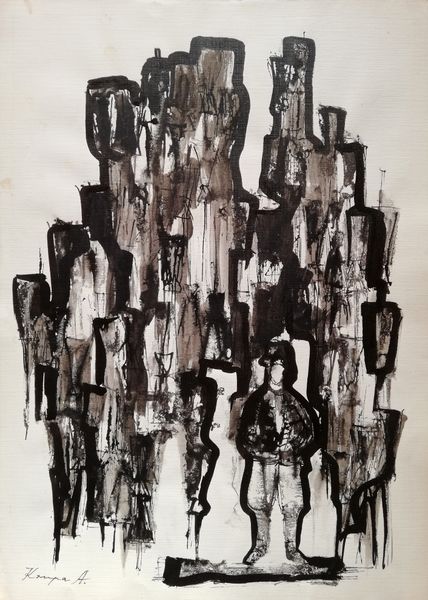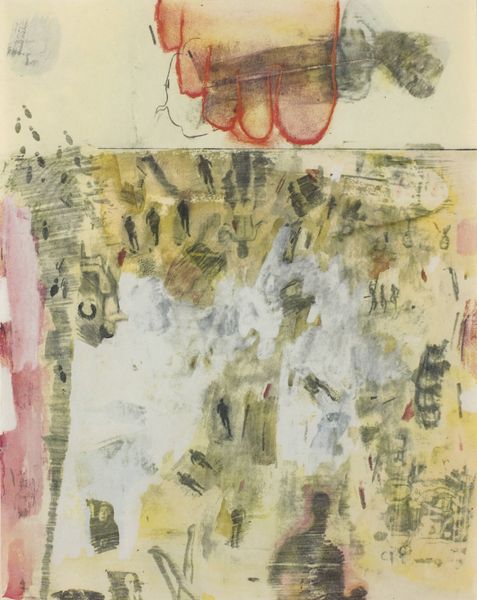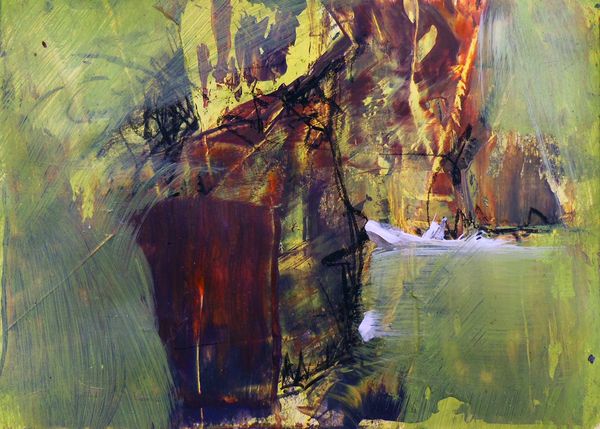
painting, oil-paint
#
abstract-expressionism
#
abstract expressionism
#
painting
#
oil-paint
#
landscape
#
form
#
abstraction
#
abstract art
Copyright: Richards Ruben,Fair Use
Curator: Looking at Richards Ruben's "Untitled" from 1951, an oil painting rendered in the abstract expressionist style, one is immediately struck by its somber and spectral qualities. What are your initial impressions? Editor: The composition, almost monochromatic, evokes a visceral reaction. It’s a masterclass in using tonal values to suggest form, even without distinct lines. The dark blues and grays are punctuated by strokes of lighter pigment that are very subtly suggestive. Curator: It does bear many marks of its time, reflecting the anxieties of the early postwar era through its fractured forms and gestural application of paint. Thinkers such as Adorno wrote about the impossibility of art after the Holocaust. The forms hint at representation while resisting it. It invites viewers to confront a world forever altered. Editor: True, but I’m compelled by the internal structure. Note the way the eye is led upwards through the converging strokes of the pigment to imply forms; it's not just chaos. There is an underlying geometry, a series of interlocking shapes. There's a certain structural intelligence that shapes even the most 'spontaneous' mark. Curator: Considering its historical context, it would be easy to assume the artist intended this painting as an exercise in trauma, but perhaps Ruben was questioning the possibility of landscape painting itself in the modern world. Consider the rise of the suburb—and the displacement of rural modes of life. Editor: That’s certainly plausible. From a purely formal point of view, the impasto, applied with a vigour that seems almost frantic, makes the oil medium its own statement, like a three-dimensional poem. Do you agree that it almost makes you want to reach out to feel it? Curator: Absolutely. The texture adds another layer to its engagement with the natural world. It also suggests the artist's physical engagement in the painting, gesturing not just at the themes, but his active and subjective position. The 'painterly' quality indexes a perspective of masculinity rooted in hard labor. Editor: Precisely. So, Ruben’s visual language becomes both personal and reflective of art history, wouldn't you say? Curator: I agree; and perhaps we too have each added our own personal perspectives through a conversation situated in history. Editor: An interesting experience, highlighting how an artwork, even without a title, still provokes diverse interpretations depending on the observer's framework.
Comments
No comments
Be the first to comment and join the conversation on the ultimate creative platform.
